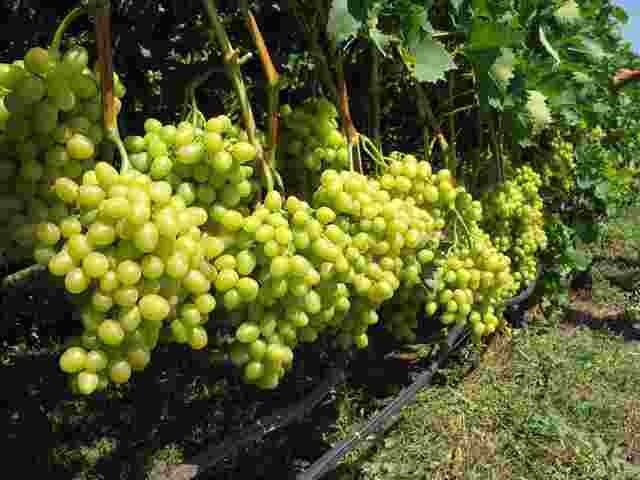Grapes are unpretentious crops that do not require careful maintenance. But to obtain a stable and healthy harvest, one should follow the basic rules of agricultural technology, among which is the autumn treatment of bushes from diseases and pests in the autumn. On the implementation of these activities and timing will be discussed in this article.
Table of contents
The Importance of Spraying Grapes in the Fall
Many insects, their larvae, as well as fungal spores easily tolerate sub-zero temperatures in plant debris, bark, and even soil.. To get healthy shoots in the spring, you need to carry out a thorough processing of plants in the garden in the fall. This will help to protect the grapes from disease, to survive the winter without any problems. But before starting work it is necessary to inspect the vine in order to detect any signs of disease. Identification of lesions gives the opportunity to conduct treatment with special drugs, to get the result before the onset of cold weather. Without proper attention, a weakened plant has few chances to survive the severe frosts.
The vineyard cultivated in the fall in the garden in the spring begins to actively develop, quickly enters the vegetation phase, which makes a good bookmark for the future harvest. If you do not spray and feed the eternal berries, the culture at best suffers from cold and starts to wake up weaker from hibernation, spending more strength and energy on the recovery process. In the worst case, an unprocessed shrub dies, aided by microorganisms that hit the grapes before the onset of cold weather.
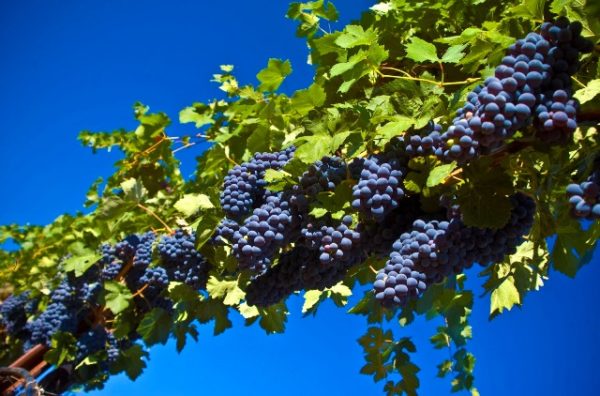
How to process grapes for the winter
In the course of the autumn events, gardeners use various preparations and available means with a disinfecting effect. Each of them has a specific range of action, so before using it is worth getting acquainted with the product description and the recommended dosage.
Autumn treatment of copper sulphate
The tool is used for therapeutic and preventive work in the autumn preparation of the vine for wintering. The effect is provided by the antifungal properties that copper sulfate has.
For spraying, a suitable calm weather is selected with no signs of precipitation. After processing, it will take at least 4 hours for the action of the active components. If it is raining at this time, the drug will not have proper effect.
The solution is prepared immediately before processing in the required amount. Residues are utilized; the composition can no longer be used as a working solution due to the loss of its properties. Copper sulfate (50 gr.) Diluted in a glass of water. This will help to dissolve the small crystals of the chemical. After that, the mixture is sent to a 5 liter bucket of water. In this form, the tool is poured into the container of the sprayer, from which then it is necessary to splash onto the trees. Also used and iron sulphate.
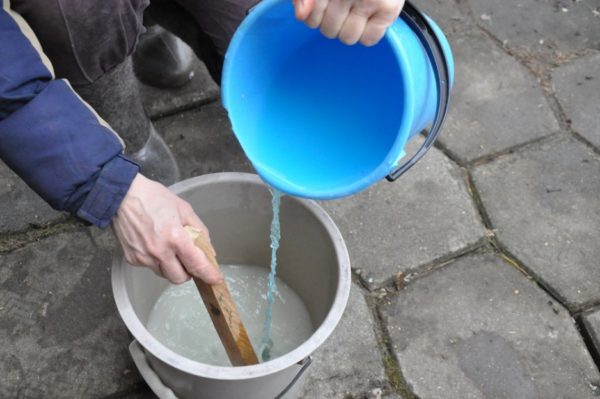
Bordeaux application
The drug belongs to the toxic agents, therefore, should observe the safety precautions and dosage. Bordeaux mixture is effective for therapeutic and preventive measures. It is used in the fight against diseases such as gray rot, mildew, oidium, anthracnose.
The mixture can be purchased in finished form or cook it yourself, using hydrated lime and copper sulphate. For autumn processing, dilute the components in such quantities:
- 100 gr. copper sulphate on 9 liters of water;
- 100-150 gr. lime on 1 liter of water.
Each substance dissolves first in different containers, after which the contents of both containers are mixed in the same container (the blue liquid is added to the white with constant stirring).
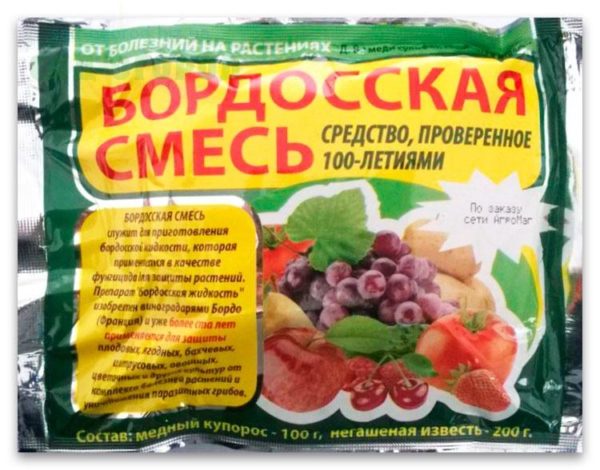
How to treat urea
Urea (carbamide) refers to nitrogen-containing fertilizers, but is also used in the fight against insect pests. For autumn processing prepare the working solution:
- 30 gr. mineral matter;
- 10 liters of water.
Plants are sprayed under cover. The tool effectively fights phylloxera, lispert, aphids, and prevents root decay. Urea can be called a universal product, but like any chemical it requires compliance with the dosage when diluting the solution.
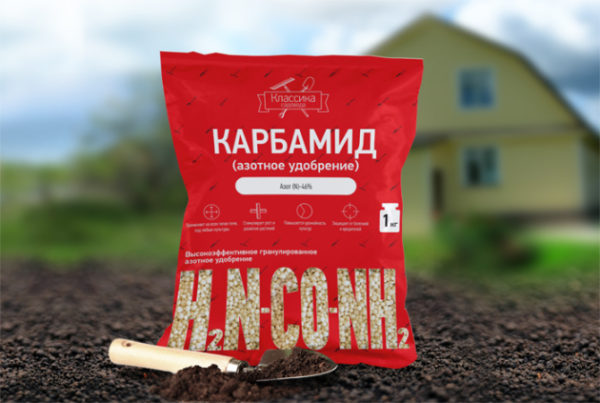
The finished mixture retains the properties of no more than 2 weeks. It is even better to cook it as long as necessary for processing. And it is easy to calculate the quantity, considering that 1.5 liters is spent on 10 m2.
Soda and potassium permanganate in the garden
Along with chemicals, gardeners often use traditional methods of insect and disease control. For autumn processing apply working solutions based on potassium permanganate and soda.
- Baking soda has a disinfecting and antifungal effect, it copes with powdery mildew on grapes. The mixture for spraying is prepared from izvoda, liquid soap, soda and vegetable oil, taken in equal proportions (5 tbsp. Per 5 liters of water). To achieve the desired effect, the procedure should be repeated weekly 2-3 times before wrapping the shrub.
- The solution based on potassium permanganate is considered to be universal, because it helps to get rid of gray rot, powdery mildew, oidium. But when using a substance, it is important not to overdo it with its quantity. The treatment liquid is easy to prepare, 5 grams is added to the bucket with water. dark crystalline powder. The water should be pink (not dark!). All the surface of the vine and the soil around the bush is sprayed generously. Use diluted manganese should be immediately.
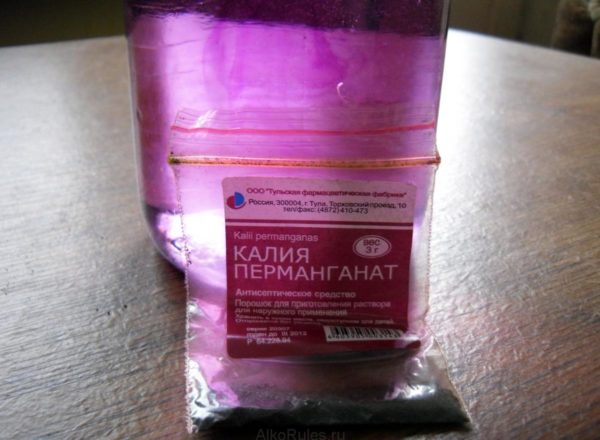
Application of fungicides in the garden
After the harvest is not worth waiting for November for the preparatory work on the shelter of grapes.It is better to carry out the treatment immediately in order to prevent the lesions from spreading to all bushes. The process itself is simple, the main thing is to choose a suitable fungicide, the action of which is aimed at the treatment of a particular disease. The use of complex drugs is also allowed.
- If spots or signs of mildew are found on the leaves and shoots, it is recommended to cut off the damaged parts of the plant, and spray the bush itself with one of the most effective means: Strobe, Ridomil, Amistar, Acrobat, Mikal.
- When identifying traces of oidium are used: Azorizin, Topaz, Impact, Atemi.
- To get rid of pests (parshers, mites, aphids, etc. parasites) will help: Polyhom, Fundazol, Rovikurt.
- If during the inspection of the grapes mites were found, then it is necessary to produce a chasing of the shoots (removal of the tops), while at the same time getting rid of 80-90% of insects. Spray the rest of the plant with Ridomil or Aktar.
- For the prevention of gray rot are used: Rock, Rovral, Switch, Euparin.
In addition to the main action, fungicides often provide prophylaxis against fungal diseases, which excludes additional treatment from anthracnose, fomipsis, etc.
How does the protection of the vineyard in the fight against diseases and pests
When carrying out spraying during the autumn period it is not necessary to be afraid to apply chemical preparations. For the plant and the future harvest, they are not dangerous, and the benefits of their action are invaluable.
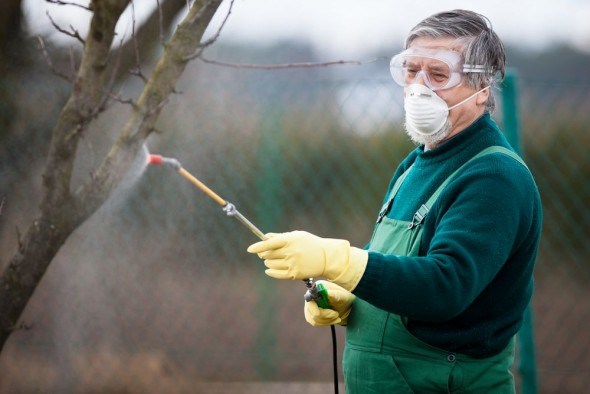
Processing of grapes, carried out in the fall, solves several problems at once: the plant's immunity is strengthened, the larvae and harmful microorganisms are destroyed, the affected area is not identified during the inspection of the vine. All goals are conventionally divided into preventive and therapeutic.
- It is necessary to process after trimming with copper sulphate or Bordeaux mixture. Means create protection against fungal infections, compensate for the deficiency of iron and other trace elements that ensure the vital activity of the plant. At the onset of cold weather, rodents become active, which strive to eat bark and even grape roots. Pest repel drugs: Tricot, Storm, Blockade.
- The use of fungicides has a therapeutic effect when spraying the bushes. Lesions (identified and hidden) are localized. Preparations penetrating into the layers of the bark kill the developing microorganisms, leaving them no chance of wintering.
- In addition, it is necessary to whitewash the trunk to avoid rodent biting the bark.
Processing bushes in gardening takes a little time, and the benefits of the event is obvious. Therefore, it is not worth saving a few hours, jeopardizing the future harvest.
